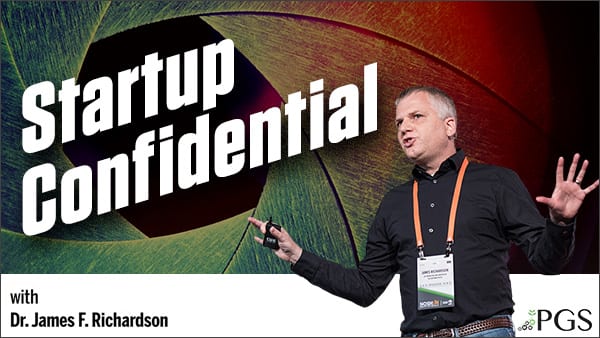PODCASTS / E41

Ep. 41 – The “Death Funnel” – Revisited
MAR. 1, 2021
I’ll be honest. A serial entrepreneur I know very well listened to my very first podcast episode last year, the one with the same title as this one and brutally mocked my exaggerated, over dramatic language via SMS message.
Of course, he hadn’t looked at the data I’ve seen, so it made no sense to him that 80% of premium CPG brands can’t make it past $500,000 in net revenue. It can’t be that hard, can it? Of course, this is a millionaire dude we’re talking about.
Every year there are dozens of new brands that shoot out to $1M or so, skipping right over this glass ceiling for undercapitalized entrepreneurs. Not to mention the 1-2 unicorns a year that REALLY skip over the funnel of death…These are almost ALL brands launched by serial entrepreneurs with vast wealth, access to vast seed monies and tons of old boy connections in the industry. Yawn.
If you e-mail any of these cocky punks for free advice, don’t be shocked if you get a link to my book on Amazon as their reply. Sorry, in advance. They’re besieged.
But, the vast majority of CPG entrepreneurs have to start small. They can’t afford massive initial production runs. And they aren’t able to sell into enough stores to justify them. Increasingly, chain retailers want small businesses to start small, in regions or divisions first anyways. So, founders buy smaller runs until sales justify higher ones. In the beginning the potential for supply chain sputters and gaps are very high as demand grows. It’s messy. You’ll need to buy your distributor wine or placate them with obsequious phone calls. You’ll have to badger them to get retailer orders filled as quickly as possible.
All of this means that brands in the Death Funnel are negative EBITDA in almost all cases until they hit around $500,000 in net revenue. This is about when CPG brands are able to cover fixed costs of a small team, such as COGS, legal, accounting and other fixed fees, including token founder salaries that are usually embarrassing. They could still negative EBITDA, but at least they’re covering fixed costs.
If this sounds crazy, that’s because, from a small business perspective, a small CPG startup is an absolutely CRAZY business model to take on. Denying the financial risk is perhaps the best psychological strategy, as long as you and your family know your actual limits to your # months of making nothing.
And it is that limit to non-wage earning, losing distributor slots, screwed up production runs that lead to out of stocks, cash flow inversions that cause you to miss co-man payments and get booted, etc.
This is blood. Blood on your face. On your office floor. Blood on each pallet shipped out.
And most brands flame out, unprepared for what it really takes to get to $500,000 as a couple of dudes or gals with less than $200K in seed money. I’ve met lots of starry-eyed founders with premature booths at Expo West. They spend their entire annual marketing ‘budget’ on an overpriced booth with shitty placement before they’ve let their local market help them finish their offering.
If you look at my website now, it bares little resemblance to the one I started with in 2017. Why? Well, because I started with a rough draft that I KNEW wasn’t complete. I used my early clients to learn more about where I would best fit in within the ecosystem of early-stage brands. They got a super cheap rate. Good for them. I got as much out of it, if not more, than they did.
I started with an unfinished offering, but I didn’t go out, buy sponsorships at Bevnet and New Hope with home equity in support of my unfinished offering. I still wouldn’t buy any of those sponsorships, FYI… Talk about vanity spending. Instead, I stayed humble and researched. And I listened and observed.
If you’re in the Death Funnel, between 0 and half a million on your books. in revenue, you want to get out of it as a fast as possible because of the bloodletting. I get it. But this does not mean you can really afford to skip past the learning/iteration phase I discuss at length in Ramping Your Brand.
The challenge in getting through has a lot to do with the fact that you are very understaffed yet have basically the same amount of variables to manage as a $5M revenue brand. This leads to operational whack-a-mole and a highly reactive, fear-driven mindset very, very easily. And the latter is what dooms many new founders, because fear will guarantee poor, short-term decision making.
I can’t think of a better reason to have a simple, 1-page plan…Why? Because it keeps you focused on a very simple set of target numbers AND focuses you on the long-term, which, for you, is literally the end of the year.
Without that end-of-year frame of reference, the day-to-day roller coaster of emotions could easily overwhelm you. Turning those end-of-year goals into month-over-month targets is a best practice for execution. It ensures that you have ways to measure your progress through the Death Funnel and up onto the Ramp.
If you’re a founder interested in learning more about early-stage planning, I teach a Quarterly online course. You can register on my site anytime in advance. Just visit www.premiumgrowthsolutions.com/webinars